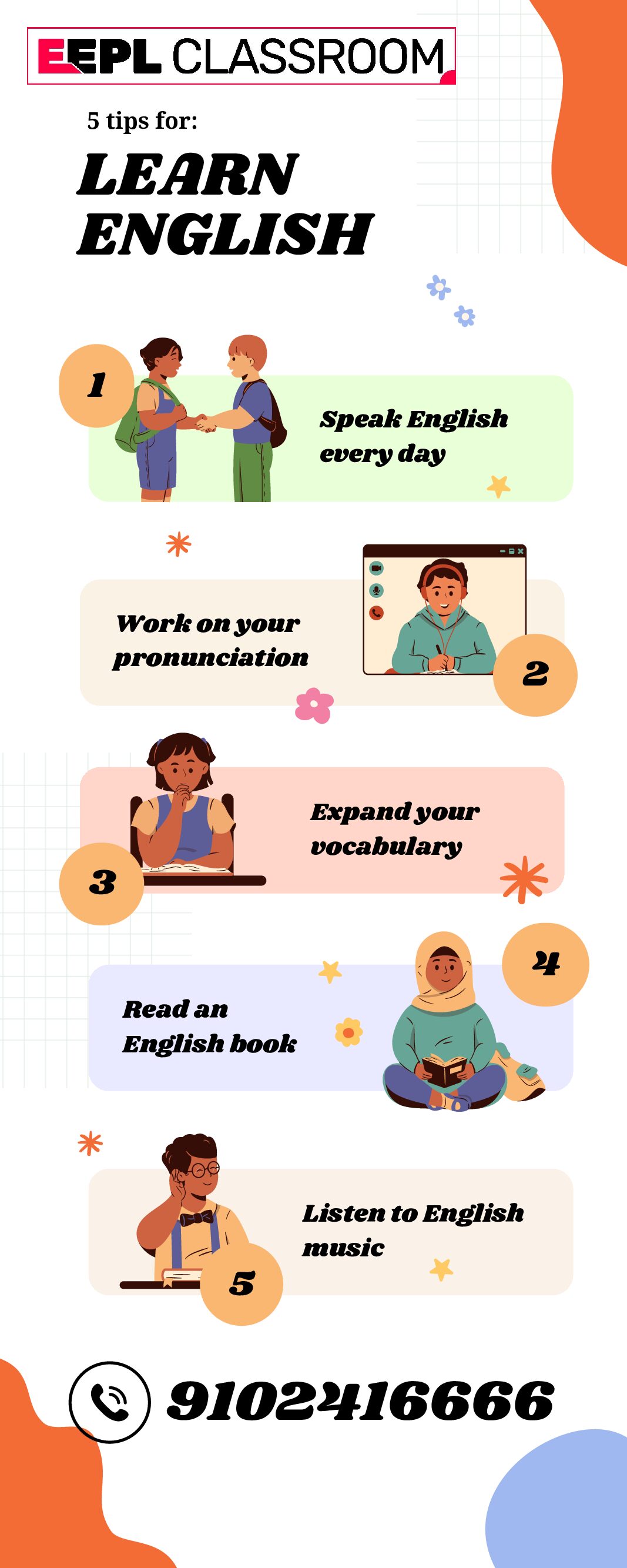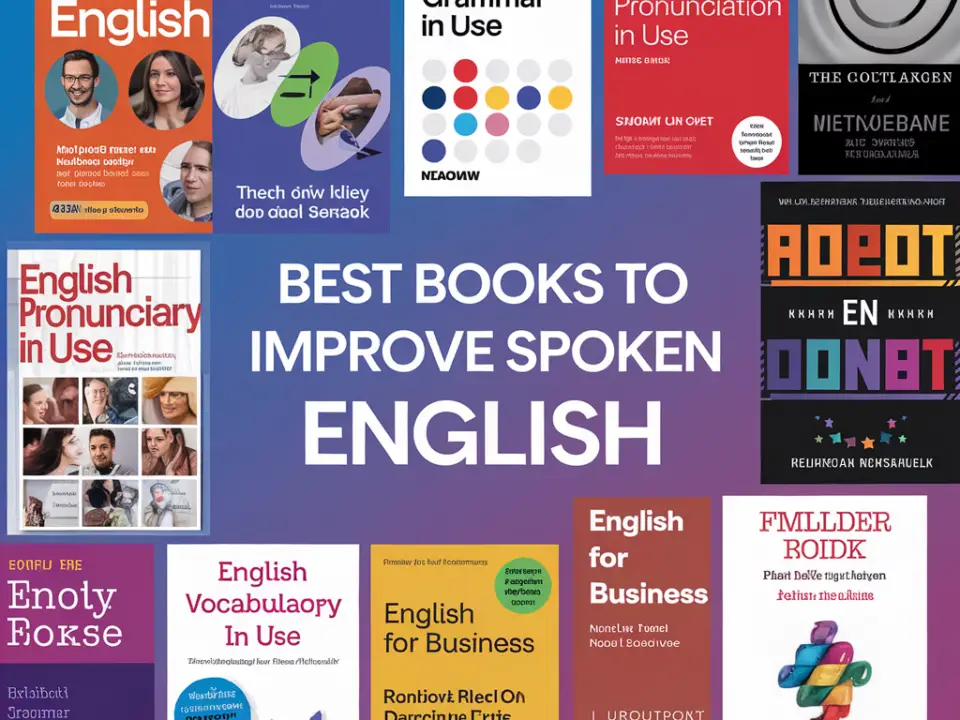
The Importance of Spoken English for Effective International Communication
November 9, 2024
Enhancing Career Prospects: The Impact of English Skills in Multinational Companies
November 11, 2024Introduction to the Global Language
The English language has solidified its status as a global lingua franca, serving as a common medium of communication for people across different cultures and national backgrounds. Its rise to prominence can be traced back to various historical, economic, and sociopolitical factors that facilitated its adoption in numerous domains, ranging from academia to business, diplomacy, and, importantly, the entertainment industry. As globalization accelerates, the necessity for a shared language becomes increasingly apparent, leading to the widespread use of English in conversations that conform to international standards.
Furthermore, technological advancements have greatly contributed to the proliferation of spoken English. The advent of the internet and social media has provided platforms where English is the predominant mode of expression, resulting in an exponential increase in exposure to the language. This pervasive influence encourages non-native speakers to engage with English content, from movies and music to news and tutorials. In places such as Ranchi, the importance of learning spoken English is undeniable, as it enables individuals to access a wealth of information and opportunities typically dominated by the English-speaking population.
The entertainment industry, particularly film and music, plays a crucial role in popularizing spoken English and fostering a global audience. English-language movies and songs not only serve entertainment purposes but also facilitate cultural exchange, allowing myriad audiences to immerse themselves in diverse narratives and musical styles. As a result, English has transcended its geographic boundaries, becoming a bridge between different societies and facilitating mutual understanding. The impact of this global language is particularly significant in areas where individuals seek to enhance their proficiency in spoken English, as it opens doors to both personal and professional growth.
Historical Context of English in Media
The evolution of the English language in media is a testament to its significant influence across various artistic and entertainment platforms. Beginning with the silent film era of the early 20th century, English emerged as a dominant language in cinema. Silent films, while lacking dialogue, often utilized intertitles in English, which laid the foundation for audiences to associate visual storytelling with the language.
The arrival of sound in cinema during the late 1920s marked a pivotal moment in the global media landscape. As talkies gained popularity, English-language films began to proliferate. Hollywood quickly established itself as a cultural powerhouse, producing movies that translated effectively across linguistic borders. The success of these films encouraged the dissemination of spoken English, allowing viewers around the world to engage with the language through music and performances they might not have encountered otherwise.
Radio further amplified the reach of English during the mid-20th century. In the United States, radio broadcasted English programs to millions, shaping public opinion and popular culture. This period not only transformed entertainment but also played a crucial role in language acquisition and mastery as listeners absorbed spoken English conversational patterns and diction through various radio shows.
Television, which gained widespread popularity in the 1950s, solidified English as a primary language in media. As shows became accessible globally, they often highlighted cultural references and social themes rooted in English-speaking societies. The global spread of English-language programming fostered interest in learning spoken English in various regions, including cities like Ranchi, where educational initiatives emerged to meet this demand.
In conclusion, the historical trajectory of English in media showcases its transformative power in shaping cultural exchange and entertainment paradigms worldwide. Through cinema, radio, and television, English has firmly established itself as a vital conduit for expression, ultimately influencing how audiences perceive and engage with the language. The interplay between media and language continues to evolve, reflecting changes in society and technology. As a result, the prevalence of spoken English remains a significant aspect of both personal and cultural identity in today’s interconnected world.
Hollywood’s Dominance and Global Reach
Hollywood has emerged as a powerful force in the global entertainment landscape, fundamentally shaping perceptions of the English language across various cultures. The proliferation of blockbuster films has facilitated the widespread adoption of spoken English, allowing audiences worldwide to engage with the language through accessible media. Movies produced in Hollywood often feature engaging narratives, impressive visual effects, and memorable soundtracks, contributing to the global appeal of English-language cinema. The exposure to spoken English through these films plays a pivotal role in fostering an interest in language learning, particularly among non-English-speaking populations.
The cultural significance of Hollywood films extends beyond mere entertainment; they often serve as a reflection of societal values, trends, and aspirations. As blockbuster franchises gain traction internationally, they bring with them a lexicon of spoken English that resonates with global audiences. This phenomenon is particularly evident in countries where popular culture heavily influences youth, leading to an increased prevalence of English phrases and idioms in everyday conversations. Consequently, the integration of spoken English in mainstream media has become a vehicle for cultural exchange, where viewers not only consume content but also absorb the nuances of the language.
In addition, the collective experience of watching Hollywood films in theaters fosters a shared cultural understanding that transcends linguistic barriers. Subtitled versions of these films further enhance accessibility, allowing non-English-speaking audiences to appreciate the stories while simultaneously acclimatizing themselves to spoken English. As the influence of Hollywood continues to flourish, non-English-speaking countries, including those in regions such as Asia and Latin America, increasingly incorporate elements of spoken English into their own media landscapes, from local film productions to popular music. Thus, Hollywood’s reach becomes a catalyst for the promotion of English as a vital component of modern global communication.
The Role of Music in Spreading English
Music serves as one of the most potent tools for cultural exchange, significantly contributing to the global spread of spoken English. Various genres, particularly pop, rock, hip-hop, and electronic dance music (EDM), predominantly feature English lyrics, facilitating a broad audience’s exposure to the language. Artists like The Beatles, Beyoncé, and Ed Sheeran have not only achieved international fame but have become cultural icons, furthering the reach of English through their music.
English-speaking artists often use their music to tell stories that resonate with a wide audience. The themes in popular songs, whether love, heartbreak, or social issues, transcend cultural borders, inviting listeners from diverse backgrounds to engage with the lyrics and the language. This phenomenon encourages non-native speakers to learn and practice spoken English, guided by the songs they enjoy. Thus, music not only entertains but also educates and inspires a global audience to embrace English.
The impact of English-language music can also be observed in the trends of music consumption across various regions. For instance, South Korea’s K-pop industry heavily incorporates English phrases and hooks in songs, aiming to captivate global listeners. This blending of languages highlights the significance of spoken English in contemporary music and its ability to connect different cultures. Additionally, platforms such as YouTube and Spotify have made English music accessible worldwide, further enhancing its influence.
Moreover, the lyrical content of many English songs often becomes a point of reference for language learning. As listeners sing along, they naturally pick up vocabulary, phrases, and pronunciation. Thus, music stands as a dynamic vehicle for disseminating spoken English, facilitating both enjoyment and education in a seamless manner.
Media Platforms and the Content Revolution
In recent years, digital platforms have played an instrumental role in revolutionizing the consumption of English-language content across the globe. Services such as Netflix, YouTube, and Spotify have transformed the way audiences access movies, music, and multimedia content, making English media accessible to a broader audience than ever before. These platforms facilitate the rapid distribution of spoken English content, catering not only to native speakers but also to international viewers eager to engage with English language and culture.
Streaming services like Netflix have expanded their libraries to include a wide array of English-language films and series, which are often accompanied by subtitles in multiple languages. This accessibility allows non-native speakers to immerse themselves in spoken English, enhancing their listening skills and cultural understanding. The platform’s investment in original programming, featuring stories told in English, further highlights this trend, uniting millions of viewers around shared narratives and experiences.
YouTube, on the other hand, has democratized content creation, enabling individuals worldwide to share their work. This has resulted in a vast repository of spoken English content ranging from tutorials to vlogs, providing diverse opportunities for language learning. As content creators leverage the platform’s global reach, they inevitably increase the consumption of spoken English, assisting audiences in honing their skills while exploring various subjects and interests.
Similarly, Spotify has redefined music consumption with its extensive library of songs and podcasts in English. The platform facilitates the discovery of English-language music across genres, encouraging listeners to not only enjoy the auditory experience but also improve their spoken English through lyrics. The accessibility of English media on these platforms illustrates the profound impact of digitalization on language consumption, reinforcing the global significance of spoken English.
Cultural Exchange and English Learning
The advent of global media has significantly influenced the rise of spoken English in various cultural spheres. With movies, music, and television shows being easily accessible worldwide, diverse audiences engage with content that promotes both entertainment and education. This phenomenon not only facilitates cultural exchange but also emphasizes the importance of learning the English language, particularly spoken English.
As individuals consume English-language media, they are often exposed to unique cultural nuances, expressions, and colloquialisms that enrich their understanding of the language. In places like Ranchi, the influence of spoken English can be particularly notable as residents interact with English media, further motivating them to learn the language. This exposure allows learners to pick up vocabulary, pronunciation, and grammar in a contextual setting, which is often more effective than traditional classroom learning.
Moreover, the popularity of English-language films and songs has contributed to a growing trend in language acquisition. When individuals are captivated by the latest Hollywood blockbuster or the newest chart-topping hit, the desire to understand and engage with the content drives them to improve their spoken English skills. This interactive form of learning not only enhances their proficiency but also fosters a deeper appreciation for the subtleties of the English language.
English serves as a vital communication tool among diverse cultural contexts, bringing people together through shared interests in media. Language learners are increasingly leveraging global platforms to connect with native speakers, thus practicing their spoken English in real-world scenarios. Not only does this empower individuals to boost their language skills, but it also promotes a sense of global unity, as people from various backgrounds come together to explore and celebrate different cultures through the medium of the English language.
Challenges and Criticisms of English Dominance
The global prevalence of English in movies, music, and media has sparked significant discussions regarding its implications, leading to various challenges and criticisms. One of the foremost concerns is the issue of linguistic imperialism, where the dominance of English can overshadow local languages and dialects. As English becomes the lingua franca, many indigenous languages risk declining usage, ultimately leading to their potential extinction. This linguistic shift raises questions about cultural identity, as languages are intrinsically tied to the heritage and traditions of their speakers.
Additionally, the ascendance of English-language content can adversely affect local cultures. For instance, in regions such as Ranchi, where diverse dialects exist, the preference for spoken English in media may lead to a homogenization of cultural expressions. Local artists and creators often find themselves pressured to adopt English in their work, compromising the authenticity and richness of their native forms of expression. This can result in a cultural landscape where English becomes synonymous with success, leaving local artistic styles and narratives undervalued.
Furthermore, there is notable resistance to English-language content in non-English-speaking regions. Audiences may express dissatisfaction with the predominance of English films and songs, arguing that this phenomenon diminishes the value of their own languages and narratives. As consumers increasingly turn to local content, there is a growing movement aimed at promoting spoken English alongside native languages, fostering an environment where multiple voices can coexist. Such resistance highlights the complex relationship between globalization and cultural preservation.
In light of these challenges, it is crucial to encourage a balanced approach that respects linguistic diversity while acknowledging the global influence of English. This harmony can foster an appreciation for multiple languages and cultures, ultimately enriching the global media landscape.
Future Trends: The Evolution of English in Media
The landscape of media is currently undergoing significant changes, largely influenced by the rapid growth of digital platforms and social media. As these mediums continue to gain prominence, the use of spoken English is evolving to meet the demands of diverse audiences. In the context of media consumption, English language content is being produced at an unprecedented rate, reflecting deep societal shifts and technological advancements.
One of the most notable trends is the rise of user-generated content across platforms such as YouTube, TikTok, and Instagram. Here, the spoken English used is often more informal, relatable, and diverse than traditional media. Content creators are adapting their language to resonate with localized audiences while still reaching a global market. Hence, the spoken English in Ranchi or other regional versions is emerging in ways that were previously not prevalent. This localized approach enables creators to connect with audiences at a personal level, contributing to a richer, more varied linguistic tapestry.
Furthermore, the integration of technology in media has led to the emergence of artificial intelligence tools that assist in translating and generating spoken English content. These advancements enable a broader reach and accessibility, making the language more adaptable for non-native speakers. Consequently, the language is developing organically, incorporating new slang, idioms, and constructs that reflect the current zeitgeist.
In addition, global events, social movements, and cultural shifts are influencing the way English is used within media. This continuous evolution suggests an exciting future where the spoken English will not only adapt to new formats but also embrace a more global perspective, allowing for richer communication and understanding across different cultures.
Conclusion: The Enduring Legacy of English in Media
Throughout the exploration of the global influence of English in movies, music, and media, it has become evident that the English language holds a prominent position in contemporary culture. Its widespread usage as a common medium of communication allows for a greater exchange of ideas and creativity across international borders. From blockbuster films to chart-topping songs, English serves not just as a vehicle for storytelling but as a bridge that connects diverse audiences.
The impact of spoken English can be seen vividly in various forms of media, where it enhances accessibility for non-native speakers, fostering a greater appreciation for artistic expression. This phenomenon is particularly observable in regions such as Ranchi, where individuals are increasingly engaging with global media offerings and improving their spoken English skills. The drive to attain fluency not only enriches personal and professional opportunities but also promotes cultural exchange, allowing local narratives to intersect with global trends.
Moreover, while the dominance of English in these realms is significant, it is crucial to celebrate and uphold linguistic diversity. The coexistence of multiple languages and dialects contributes to the richness of global culture, providing unique perspectives and stories that may not be articulated in English. Thus, as the English language continues to evolve and adapt within various media, there is an ongoing need to acknowledge the cultural significance of other languages and dialects. This approach ensures that the global tapestry of communication remains vibrant, inclusive, and representative of the world’s multitude of voices.
In conclusion, the enduring legacy of English in movies, music, and media exemplifies its power in shaping cultural dialogues, while emphasizing the importance of embracing linguistic diversity. As we move forward, fostering an environment that appreciates both the global influence of spoken English and the unique contributions of other languages will be essential for enriching our shared cultural narrative.




